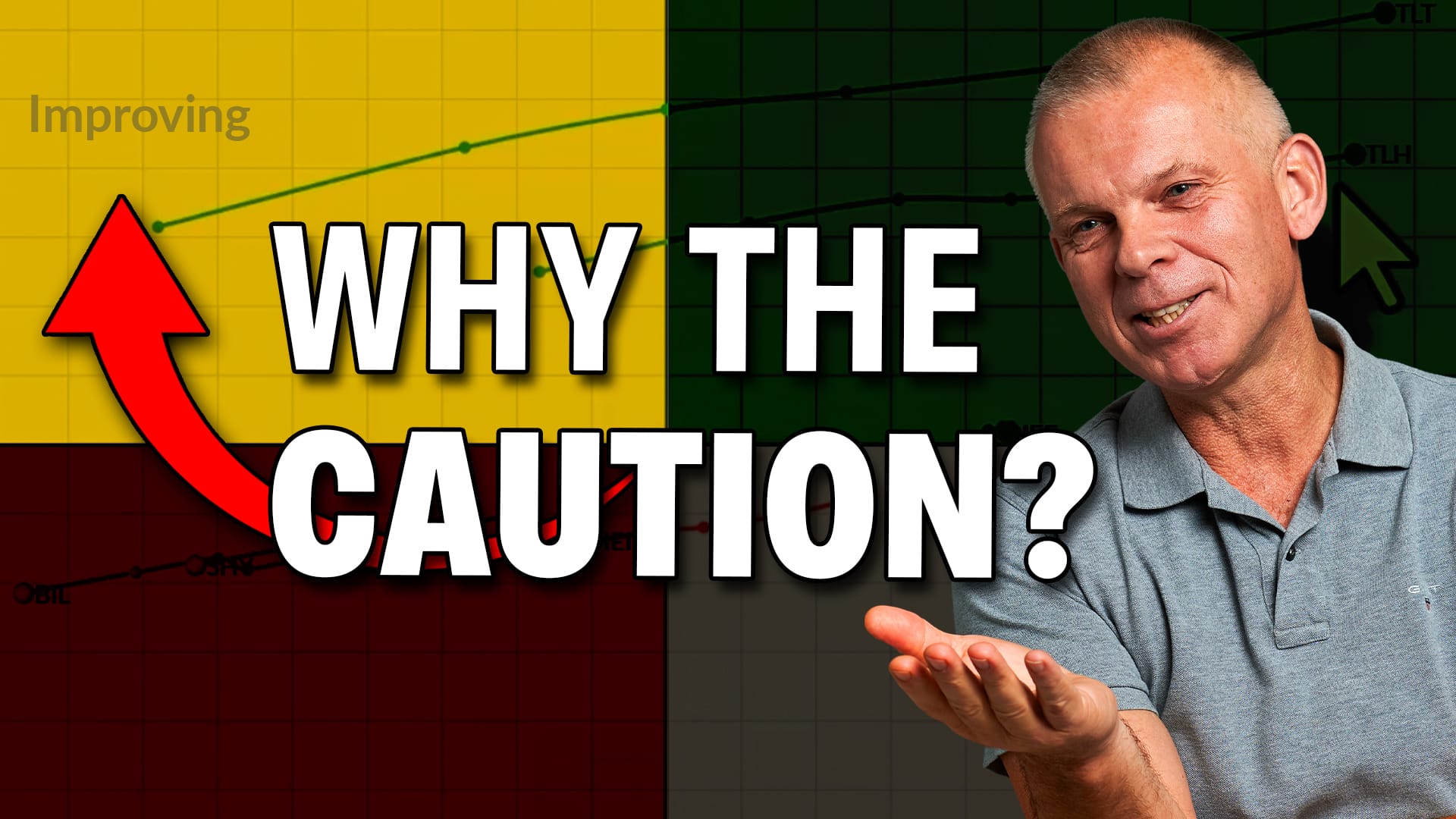SELLING PRESSURE CONTINUES AS STOCKS EXTEND CORRECTION -- DOW TRANSPORTS START TO LAG THE MARKET -- TREASURIES BOUNCE AS MONEY ROTATES INTO RELATIVE SAFETY -- METALS & MINING SPDR CONFIRMS BEARISH CONTINUATION PATTERN
SELLING PRESSURE CONTINUES AS STOCKS EXTEND CORRECTION... Link for today's video. The stock market remained in corrected mode with weakness across the board. The major index ETFs were all lower, all nine sectors declined and almost all industry group ETFs were down. Chart 1 shows the S&P 500 ETF (SPY) breaking first support last week and falling to the mid November trend line this week. There is also potential support in the 160 area from broken resistance. SPY is now down over 3% the last two weeks. This may not seem like much, but it is the biggest 10 day decline since mid November. Stocks were simply due for a corrective period after a massive advance since mid November. This decline is deemed a correction within a bigger uptrend for now. Should 160 fail to hold, the 153-154 area marks the next support zone. Those looking for a fundamental reason for this week's decline can turn to the ISM Index on Monday and today's Beige book. The ISM Index was below 50, which indicates economic weakness in the manufacturing sector. The Beige book noted that economic growth was "modest to moderate". I did not know there was anything between modest and moderate. In any case, there is talk of QE tapering, but recent economic data does not support the case for tapering. Thursday's jobless claims number is the next big data point to watch. Chart 2 shows the Nasdaq 100 ETF (QQQ) breaking first support this week and second support residing in the 69-70 area.

(click to view a live version of this chart)
Chart 1

(click to view a live version of this chart)
Chart 2
DOW TRANSPORTS START TO LAG THE MARKET ... After leading the market from late September to mid March, the Dow Transports started lagging the market over the last two months. This is interesting because relative strength in the Dow Transports preceded the November low in the S&P 500. The indicator window in chart 3 shows the Dow Transports divided by the S&P 500 ($TRAN:$SPX ratio). Notice that this ratio bottomed in late September and broke out in early November. This two month rise indicated that the Dow Transports was outperforming the S&P 500. It is positive to see the Dow Transports outperforming because this Average represents truckers, railroads, air freight and airlines, which are cyclical groups that perform best when the economy is expanding. Relative strength continued for several months and then turned to relative weakness over the last two months. Notice how the ratio peaked in mid March, formed a lower high in mid May and turned down the last few weeks. The Dow Transports is starting to lag the market and this could foreshadow a correction in the S&P 500. On the price chart, the Dow Transports broke out near 6150 and broken resistance turns into the first support zone. Failure to bounce and breakout could lead to a deeper correction. The February-April lows mark the next support zone in the 5800-5900 area. Chart 4 shows FedEx (FDX) hitting resistance near 102 and breaking down last week.

(click to view a live version of this chart)
Chart 3

(click to view a live version of this chart)
Chart 4
TREASURIES BOUNCE AS MONEY ROTATES INTO RELATIVE SAFETY... The 20+ Year T-Bond ETF (TLT) bounced for the second time this week and found support near the March low. Chart 5 shows TLT falling over 8% from high to low in May and then firming the last six days. TLT was as oversold as stocks were overbought. At this point, Treasuries have priced in some pretty good economic and employment news. The economic reports seem to be falling short and the employment reports are up next. Poor showings on the jobs front would be positive for Treasuries and cause TLT to bounce. A breakout at 116 would reverse the five week slide. The indicator window shows the Commodity Channel Index (CCI) with a trend line marking resistance near the zero line. A break into positive territory would be positive for momentum. Chart 6 shows the 7-10 year T-Bond ETF (IEF) battling support in the 105 area as RSI reached oversold levels for the first time since April 2012. That's pretty oversold.

(click to view a live version of this chart)
Chart 5

(click to view a live version of this chart)
Chart 6
METALS & MINING SPDR CONFIRMS BEARISH CONTINUATION PATTERN... The Metals & Mining SPDR (XME), which has been one of the weakest sectors in the market this year, failed at resistance and broke channel support with a sharp decline the last few days. First, the indicator window in chart 7 shows the price relative (XME:SPY ratio) falling from January to April and then flattening the last six weeks. The ratio never actually turned up and XME never showed relative strength. On the price chart, the ETF became oversold with the mid April plunge and rebounded with a bounce back to the 39-40 area. Broken support and the mid April high mark resistance here. Resistance has clearly held as the ETF failed in the 39-40 area and broke channel support. This breakdown signals a continuation lower and targets a move to the April lows, possibly lower. Chart 8 shows component Alcoa (AA) breaking down with a sharp decline the last few weeks. The price relative hit a 52-week low today.

(click to view a live version of this chart)
Chart 7

(click to view a live version of this chart)
Chart 8
MS CYCLICALS INDEX SHOWS EARLY SIGNS OF UNDERPERFORMANCE... The MS Cyclical Index ($CYC) is an equal-weight index that tracks 30 cyclical stocks from over 20 industries. These include autos, metals & mining, machinery, chemicals and transports. As it's name suggests, it is designed to measure the performance of stocks that are dependent on the economic cycle. The MS Consumer Index ($CMR), on the other hand, is an equal-weight index that tracks 30 stocks in some 20 consumer-related industries. These include soft drinks, grocery stores, pharmaceuticals, tobacco and household products. In contrast to cyclical companies, these consumer companies are relatively immune to the economic cycle. Consumers need their products regardless of economic conditions. Chart 9 shows $CYC in an uptrend, but falling back the last two weeks. Key support is set at 1100. The price relative ($CYC:$SPX ratio) may be forming a lower high to signal early signs of relative weakness, which is not a good sign. Chart 10 shows $CMR with a huge advance since mid November and a small correction the last two weeks.

(click to view a live version of this chart)
Chart 9

(click to view a live version of this chart)
Chart 10
CYCLICALS STARTED FALLING BEHIND IN 2012... These two indices are good for analyzing the current state of the market and economic prospects. Using a ratio chart, chartists can determine which index is outperforming and what that means for the broader market. In general, relative strength in cyclicals is positive for the market, while relative strength in consumer stocks is negative. Chart 9 shows a weekly ratio chart comparing the MS Cyclical Index ($CYC) with the MS Consumer Index ($CMR). The $CYC:CMR ratio (black line) rises when cyclicals outperform and falls when cyclicals underperform. Notice how this ratio generally rose and fell with the S&P 500 from 2003 until early 2012. Things changed in 2012 as the ratio drifted lower and the S&P 500 surged higher. This meant the S&P 500 moved higher even as cyclicals underperformed (consumer stocks outperformed). Notice how the S&P 500 exceeded its 2011 and 2007 highs, but the ratio chart peaked in March 2012 and failed to exceed this high, even with the surge over the last six weeks.

(click to view a live version of this chart)
Chart 11
The indicator window shows the 20-week Correlation Coefficient, which measures the correlation between this ratio and the S&P 500. As expected, correlation was mostly positive from 2003 until 2012 as both moved in the same direction. There were a few dips into negative territory, but these did not last very long. Most recently, the Correlation Coefficient dipped below -.50 in May as negative correlation reached its most extreme level in over 10 years. Even though cyclicals led the market over the last five weeks, something may be out of whack on the long-term picture. Either cyclicals need to start outperforming and catch up with the S&P 500 or the S&P 500 needs to correct and move back in line with this ratio.











